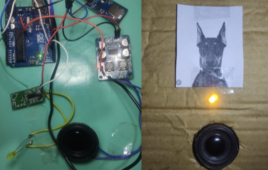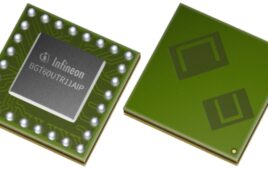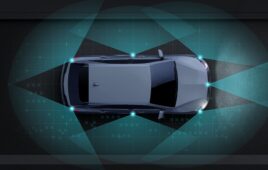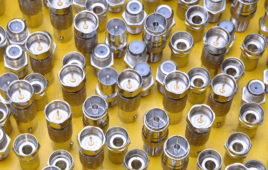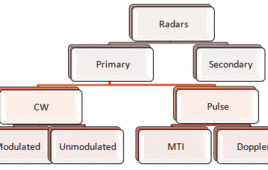It’s been said that one of the best home security systems is owning a dog. In this do-it-yourself (DIY) circuit, we’ll design a unique system that lets you take advantage of a guard dog for security without ever needing to walk or feed it. This DIY system “barks” like a dog whenever motion is detected…
Infineon launches XENSIV radar sensor for healthcare and consumer electronics
Infineon Technologies introduces the new XENSIV 60 GHz radar sensor BGT60UTR11AIP. With a compact size of only 16 mm², it’s the smallest 60 GHz radar sensor with antennas in package (AIP) on the market and is specifically designed for integration into the smallest devices. This makes the sensor ideal for vital sensing (heart and respiratory…
Rohde & Schwartz offers secure communication and monitoring networks
As a systems partner and integrator for secure communications architectures and monitoring networks, Rohde & Schwarz offers the latest in the fields of secure communications, strategic and tactical communications intelligence, security scanners, and test and measurement. At this year’s IDEF, the Rohde & Schwarz booth successfully showcased its enhanced situational awareness with COMINT solutions, naval…
Rohde & Schwarz to present automotive radar and UWB testing at CES 2023
At CES 2023 in Las Vegas, Rohde & Schwarz will present the R&S ATS1500C radar test chamber — a complete test solution for interference and RF performance testing of automotive radar sensors, the primary technology that enables autonomous driving. Another highlight will be an ultra-wideband (UWB) testing solution for smartphone and automotive applications using the…
Renesas unveils first family of automotive radar transceivers
Renesas Electronics Corporation, a supplier of advanced semiconductor solutions, is entering the automotive radar market with the introduction of a 4×4-channel, 76-81GHz transceiver designed to meet the demanding requirements of ADAS (advanced driver assistance systems) and Level 3 and higher autonomous driving applications. Leveraging automotive expertise accumulated through years of global customer engagements, Renesas will…
Infineon introduces new CMOS transceiver for advanced automotive radar
A high-performance and reliable radar module is the key to an improved automated driving-assistance system and autonomous driving in the future. New features, such as advanced emergency braking systems (AEBs) that react to crossing motorcyclists, will demand higher performance and increased modules per car. Key drivers for this growth are NCAP programs and legislation. Infineon…
TERAKI launches radar-detection software for safer autonomous driving
Autonomous driving (AD) and advanced driver-assistance systems (ADAS) rely on the precise sensing of the vehicle’s surrounding environment to safely navigate. Global manufacturers have turned to advanced sensors and algorithms to enhance perception and reach unprecedented levels of safety. TERAKI, a provider of edge sensor processing, has released the latest radar-detection software that accurately identifies…
Infineon to showcase smart sensing applications at Sensors Converge 2022
Infineon Technologies announced it plans to showcase smart sensing applications that make life easier, safer, and greener at Sensors Converge 2022. The company will present solutions based on the XENSIV sensor portfolio that highlight Infineon’s in-depth system understanding and partnerships serving consumer and industrial markets. In addition, two Infineon products have been named finalists for the event’s…
Renesas R-Car SoC and RH850 MCU to be used in Honda SENSING System
Renesas Electronics Corporation, a supplier of advanced semiconductor solutions, announced the expansion of its collaboration with Honda in the field of advanced driver-assistance systems (ADAS). Honda adopted Renesas’ R-Car automotive system-on-a-chip (SoC) and RH850 automotive MCU for its Honda SENSING Elite system featured in the Legend, which went on sale in March 2021. Honda SENSING…
Infineon to showcase IoT and automotive electronic solutions at CES 2022
Infineon Technologies announced that at CES 2022, it will “Reimagine Innovation” by showcasing the company’s wide portfolio of IoT, power, security, and automotive solutions. Infineon’s exhibits of new, innovative electronics solutions will be shown in the Ballroom San Polo 3405 and 3406 , located at The Venetian Hotel, Level 3, Foyer East. Infineon is also participating…
Infineon offers radar sensors and microcontrollers for short-range automotive applications
In-cabin monitoring systems (ICMS) are reshaping the concept of passenger safety in cars. Various applications such as left-behind child detection, driver well-being, or occupancy sensing increase road safety and the protection in vehicles. Radar, in particular, is a promising technology to address these applications due to its ability to detect micro-motions and vital signs. With…
Understanding Radio Frequency communication
Wireless communication has been around since 18th century. James Clerk Maxwell first proposed that the electromagnetic waves can be generated and they can travel through free space. Heinrich Rudolf Hertz conducted the experiments in which he demonstrated the generation, transmission and reception of electromagnetic waves which became the basis of Radio Frequency communication. The wireless communication was first introduced as wireless telegraphy in 1890 which soon became popular by the name radio telegraphy. It all started when Guglielmo Marconi developed first wireless telegraph system in 1896. The technology progressed in early 1900s with the introduction of commercial radiotelephony and by 1960s first communication satellites were in space.
Classifications of RADAR
When we start reading about radar, we come across various terms which are explained differently. There are various kinds of Radar classified in different ways. This article explains the various radar types in a lucid manner. A Primary Radar transmits high-frequency signals toward the targets. The transmitted pulses are reflected by the target and then received by the same radar. The reflected energy or the echoes are further processed to extract target information. Secondary radar units work with active answer signals. In addition to primary radar, this type of radar uses a transponder on the airborne target/object. The secondary radar unit transmits and also receives high-frequency impulses, the so called interrogation. This isn’t simply reflected, but received by the target by means of a transponder which receives and processes. After this the target answers at another frequency.
RADAR (Radio Detection and Ranging)
If you have sometimes experienced the reflection of a sound due to the presence of a sound reflecting object like a canyon/ cave, etc. you have in a way experienced how radar functions. When you shout near towards a valley or a mountain, the reflection of a sound, i.e., the echo comes back. The time an echo requires to come back can be used to estimate the distance of the reflecting object, provided the speed of sound in air is known. Radar functions in a similar manner to find out the location of the reflection object using RF waves. Radar is an acronym for RAdio Detecting And Ranging. The name itself suggests that the radars are used to detect the presence of object and determine its range, i.e., distance and bearing, using radio frequency waves.

